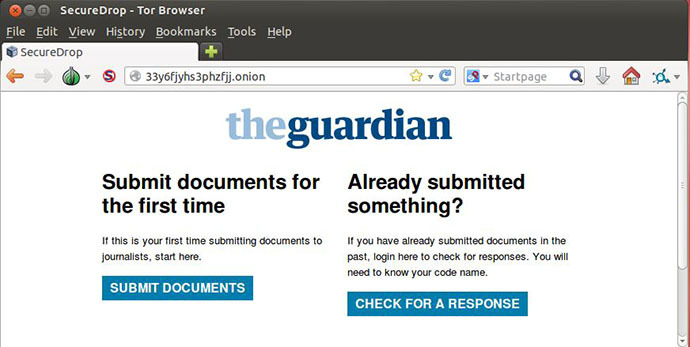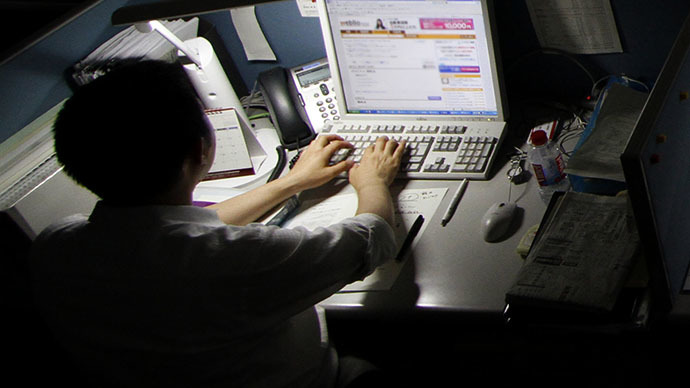The Guardian newspaper has launched a secure server for whistleblowers so they can safely submit confidential documents. It makes use of well-known anonymizing technology, which was used by journalists working on the Snowden files.
The SecureDrop open source whistleblowing platform provides a way for sources to remain anonymous and submit data and documents, while avoiding the most common forms of online tracking, the London based newspaper reports.
‘Don’t ask for privacy, Take it back’: Anti-NSA #ResetTheNet campaign kicks off
The system will make use of technology used by the journalists who reported on Edward Snowden’s leaked NSA documents such as the Tor network and the Talis operating system. A number of US based not for profit investigative newsrooms already make use of the technology, such as the New Yorker ProPublica and the Intercept.
The SecureDrop platform was developed by the US activist and computer prodigy Aaron Swartz, who committed suicide in 2013 after facing criminal persecution on charges of the mass download of academic documents and articles. The platform is now operated and maintained by the not-for profit Freedom of the Press Foundation.

The SecureDrop page is hosted on a separate server from the main Guardian website and does not use tracking cookies or logs. The server is installed outside the UK as last year the Guardian was put under intense pressure from the UK government over the publication of articles on the NSA documents leaked by Snowden.
This resulted in the newspaper relocating all its reporting on the mass surveillance issue and associated files to the USA, after it was forced by the British government and intelligence officials to destroy all copies kept at its UK headquarters.
The editor of the Guardian Alan Rusbridger said that the new system would help protect his reporters’ sources.
“Protecting sources is at the core of journalism, and as the Guardian’s revelations from the Edward Snowden documents over the last year have shown, it’s getting ever more difficult,” he said.
The Director of the Freedom of the Press Foundation said that the development of SecureDrop was part of a wider campaign to protect journalists and whistleblowers.
“In an age where governments are increasingly using surveillance to uncover sources and chill investigative journalism, technology can help whistleblowers and reporters safely get important stories to the public,” he said.
But Freedom of the Press Foundation warned that even SecureDrop does not offer 100 percent protection.
“Any organization or product that promises 100% security is not telling the truth. SecureDrop attempts to create [a] significantly more secure environment for sources to get information than exists through normal digital channels, but there are always risks,” Freedom of the Press Foundation said.

